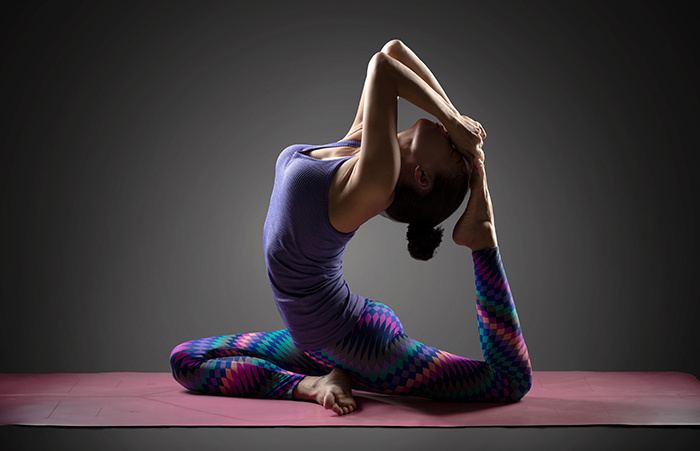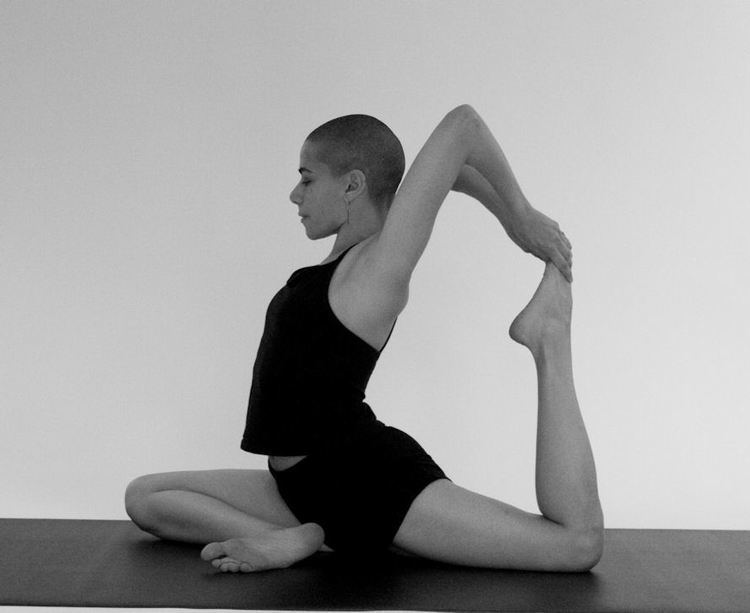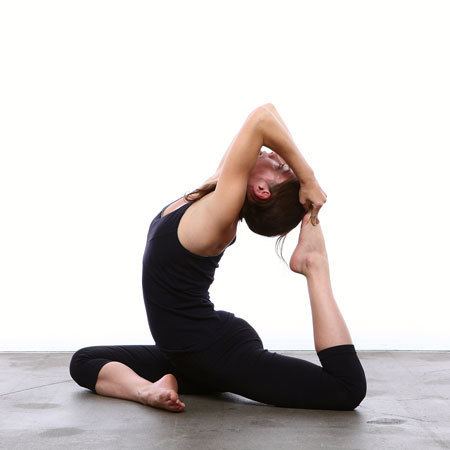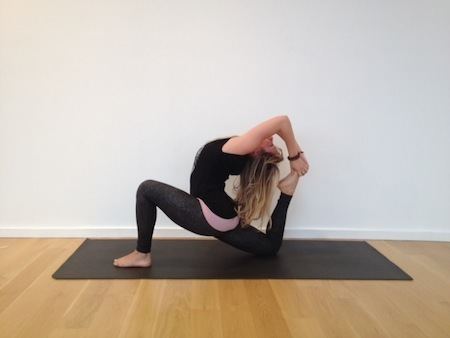Strengthens Human back, Groin | Stretches Thigh, Groin | |
 | ||
Note Consult a doctor before beginning an exercise regime Also known as King pigeon pose, Raja Kapotasana Similar Eka Pada Koundinyasana I, Kapotasana, Dhanurasana, Eka Pada Koundinyasana II, Natarajasana | ||
Pigeon pose eka pada rajakapotasana yoga pose
Raja Kapotasana (Sanskrit: राजकपोतासन; IAST: Rāja Kapotāsana) or King Pigeon Pose is an asana.
Contents
- Pigeon pose eka pada rajakapotasana yoga pose
- How to do pigeon pose eka pada rajakapotasana
- Etymology
- Description
- Benefits
- Variations
- References
How to do pigeon pose eka pada rajakapotasana
Etymology

The name comes from the Sanskrit words "raja" (राज) meaning "king", kapota (कपोत) meaning "pigeon" and asana (आसन) meaning "posture" or "seat".
Description

From a prone position, one leg is brought forward with the knee bent so that the shin crosses under the chest. In the full form of the pose, the chest lifts into a backbend and the back leg is bent, shin vertical and the hands reach back to clutch the foot. Variations Rajakapotasana may have hands and/or back leg on the ground, as well as the chest folded over the front leg.
Benefits

Raja Kapotasana is an asana which helps to open up the chest and also strengthens the back and groin. It opens and increases the flexibility of the hips, at the same time strengthening the back, and stretching the thighs and the groin.
Variations
Variations include:

Note that Kapotasana, without the "Raja" prefix is an entirely different pose and the two are easily confused. Salamba Kapotasana is a misnomer and should be called Salama Rajakapotasana instead. King Pigeon and Pigeon are different poses.


